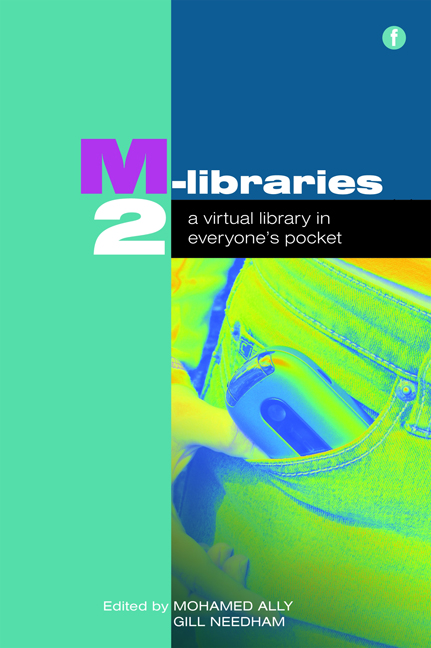Book contents
- Frontmatter
- Contents
- Acknowledgements
- Contributors
- Foreword
- Introduction
- PART 1 M-LIBRARIES: DEVELOPMENTS AROUND THE WORLD
- PART 2 TECHNOLOGY IN M-LIBRARIES
- PART 3 APPLICATION OF M-LIBRARIES
- PART 4 M-LIBRARIES AND LEARNING
- 18 Mobilizing the development of information skills for students on the move and for the workplace: two case studies of mobile delivery in practice
- 19 The library's place in a mobile space
- 20 M-libraries in distance education: a proposed model for IGNOU
- 21 Bridging the mobile divide: using mobile devices to engage the X and Y generations
- 22 Information literacy gets mobile
- 23 Library and Student Support (L&SS): flexible, blended and technology-enhanced learning
- PART 5 BUILDING THE EVIDENCE BASE FOR M-LIBRARIES
- Conclusion
- Index
20 - M-libraries in distance education: a proposed model for IGNOU
from PART 4 - M-LIBRARIES AND LEARNING
Published online by Cambridge University Press: 08 June 2018
- Frontmatter
- Contents
- Acknowledgements
- Contributors
- Foreword
- Introduction
- PART 1 M-LIBRARIES: DEVELOPMENTS AROUND THE WORLD
- PART 2 TECHNOLOGY IN M-LIBRARIES
- PART 3 APPLICATION OF M-LIBRARIES
- PART 4 M-LIBRARIES AND LEARNING
- 18 Mobilizing the development of information skills for students on the move and for the workplace: two case studies of mobile delivery in practice
- 19 The library's place in a mobile space
- 20 M-libraries in distance education: a proposed model for IGNOU
- 21 Bridging the mobile divide: using mobile devices to engage the X and Y generations
- 22 Information literacy gets mobile
- 23 Library and Student Support (L&SS): flexible, blended and technology-enhanced learning
- PART 5 BUILDING THE EVIDENCE BASE FOR M-LIBRARIES
- Conclusion
- Index
Summary
Introduction
The mobile revolution has swept around the world. During the last decade, due to enormous changes in the mobile industry, mobile usage has become a necessity for the common person. The introduction of a range of advanced features and convergence of all forms of media, such as internet, radio, television, etc., have increased the potential of mobile devices, which can now perform a variety of functions in every sphere of life.
India is the second-largest mobile market in the world and it is expected that the mobile base will expand to 500 million subscribers by the year 2010. It currently has 320 million potential mobile subscribers, with an average of 10 million new subscribers per month (Siliconindia News Bureau, 2008).
Mobile technologies have made a real-time contribution not only to human life generally, but also in the teaching and learning experience, making their value both self-evident and unavoidable. Mobile learning methods offer valuable possibilities for learners in remote and distant parts of the world. Distance education institutions in India are now in the process of adopting mobile electronic equipment and communications technologies to bring the new phenomenon of mobility to distance learners. Indira Gandhi National Open University (IGNOU) has the motto of ‘Education anywhere and anytime’ and, to achieve this, the university has introduced the concept of ‘m-education’ and is developing mobile compatiblecontent for students.
M-learning in distance education
Distance education in its present form has undergone a transition from print, to e-learning, to m-learning. E-learning was the stage of moving towards total automation in teaching and learning processes, using Learning Management Systems (LMS). E-learning has facilitated the development of programmes that utilized internet-based technologies for colleges, universities and research institutions embracing both open source and proprietary LMS tools. E-learning models are already functional in various open universities such as the UK Open University, Hong Kong Open University, Athabasca Open University, Indira Gandhi National Open University, etc. With the wide use of mobile technology, m-learning is becoming an extension of e-learning, and has the potential to make learning more widely accessible to distance learners than was previously possible in distance learning environments. M-learning is a rapidly growing development and has the advantage of allowing learners to learn ‘on the move’. As technology has become more widely available, educational options are continuing to expand.
- Type
- Chapter
- Information
- M-Libraries 2A virtual library in everyone's pocket, pp. 183 - 200Publisher: FacetPrint publication year: 2010

